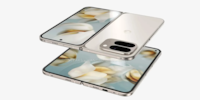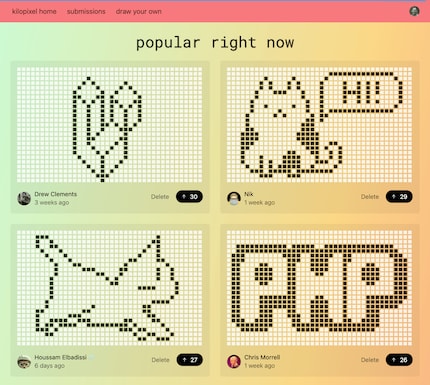
News + Trends
This is already known from Google's new Pixel 10 series
by Michelle Brändle

With his Kilopixel project, engineer Ben Holmen has built a screen that demands patience. Each pixel is a wooden cube that rotates individually: a CNC carriage does the work, you do the motif.
Modern monitors update millions of pixels dozens of times per second. Kilopixel, on the other hand, works in slow motion: A machine rotates only around ten blocks of wood per minute until an image gradually emerges from a total of 1000 cubes. US engineer Ben Holmen spent six years building this mixture of art object and display. Via the website kilopx.com, you can upload your own designs and vote on them. And you can even follow live how the motif changes and reshapes block by block.
Kilopixel is not a screen in the traditional sense. Instead of controlling millions of pixels almost instantaneously, a mechanical device turns over physical cubes. Holmen describes the project as a «large, inefficient display» with an open web interface for everyone. The 40×25 matrix provided the name and the short domain. It makes exactly 1000 pixels.
A CNC carriage (gantry) moves across the grid line by line and rotates each cube individually. The controller generates G-code and precisely addresses the respective target position. Holmen developed hardware, firmware and a web app for this purpose. According to the FAQ, the pixels are actually controlled individually by the CNC.

The current expansion stage uses a converted CNC with a Raspberry Pi controller. Light sensors check whether a cube is correctly aligned. Each cube was manufactured by hand, painted and provided with notches that facilitate precise positioning every 90 degrees. Wires hold the grid together and a flexible «Poker» rotates the cubes.
Because the sled only rotates one pixel at a time, Kilopixel is deliberately slow. Holmen speaks of 30 to 60 minutes per motif, depending on the motif and workflow. Other reports quote around ten pixel changes per minute - i.e. around 100 minutes for 1000 pixels. This requires patience and makes the image composition visible.

At kilopx.com you can upload your own pixel graphics, vote on suggestions and follow the current «drawing run» live. The sections «Draw», «Submissions» and the gallery of completed works («Completed») show what is currently in progress and what Kilopixel has already realised. You can find a past livestream here:
Holmen tested numerous materials for the pixels, including table tennis balls, golf balls and Nerf balls. They proved to be too fragile, too uneven or mechanically impractical. In the end, he opted for wood. It is robust, visually appealing and easy to work with. He has documented the search for materials and much more in his blog.
My interests are varied, I just like to enjoy life. Always on the lookout for news about darts, gaming, films and series.